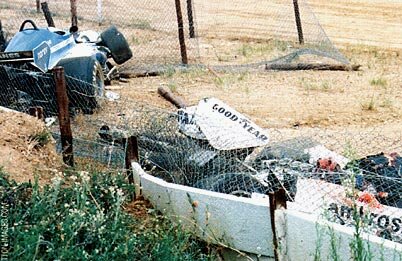
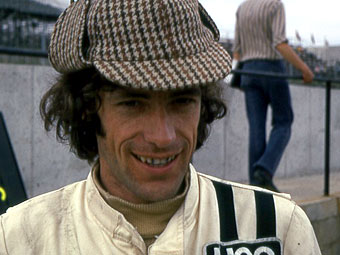
Tom Pryce began his final race weekend, the 1977 South African Grand Prix at Kyalami, by setting the fastest time in the Wednesday practice session, held in wet weather. Pryce posted a time of 1 minute 31.57 seconds with the next best, the eventual 1977 World Champion Niki Lauda, a full second slower. The weather dried up prior to the Thursday session, and he slipped back down the grid to fifteenth place, almost two seconds slower than James Hunt's pole position time.
The Welshman's DN8 made a poor start to the Grand Prix and by the end of the first lap was in last place. Pryce started to climb back up the field during the next couple of laps, overtaking Brett Lunger and team mate Renzo Zorzi on lap two, and Alex Ribeiro and Boy Hayje the following lap. By lap 18 Pryce had moved from 22nd to 13th place.
The situation caused two marshals from the pit wall on the opposite side of track to intervene. The first marshal to cross the track was a 25-year oldpanel beater named William (Bill). The second was 19-year old Frederik Jansen Van Vuuren, commonly known as Jansen Van Vuuren, who was carrying a 40 lb fire extinguisher. George Witt, the chief pit marshal for the race, said that the policy of the circuit was that in circumstances involving fires, two marshals must attend and a further two act as back-up in case their extinguishers were not effective enough. Witt also recalled that both Bill and Van Vuuren crossed the track without prior permission. The former only just made it safely across the track, but the latter did not. As the two young men started to run across the track, four cars driven by Hans-Joachim Stuck, Pryce, Jacques Laffite and Gunnar Nilssonwere exiting the final corner and coming onto the main straight.On lap 21, Zorzi pulled off to the left side of the main straight, just after the brow of a hill and a bridge over the track. The Italian was having problems with his fuel metering unit, and fuel was pumping directly onto the engine, which then caught fire. Zorzi did not immediately get out of his car as he was experiencing trouble in disconnecting the oxygen pipe from his helmet.
The impact with the fire extinguisher had wrenched Pryce's helmet upward sharply, and he had been partially decapitated by the strap. Death was almost certainly instantaneous. Pryce's Shadow DN8, now with its driver dead at the wheel, continued at speed down the main straight towards the first corner, called Crowthorne. The car left the track towards the right, scraping the metal barriers before veering back onto the track after hitting an entrance for emergency vehicles. It then hit Jacques Laffite's Ligier, sending both Pryce and Laffite head-on into the barriers. Van Vuuren's injuries were so severe that, initially, his body was only identified after the race director had summoned all of the race marshals and he was not among them. Pryce was directly behind Stuck's car along the main straight, Stuck himself sensed Van Vuuren and moved to the right to avoid both marshals, missing Bill by what Tremayne reports to have been a matter of "millimetres". From his position directly behind Stuck, Pryce could not see Van Vuuren and was unable to react as quickly as Stuck had done. He struck the teenage marshal at approximately 270 km/h (170 mph). Van Vuuren was thrown into the air and landed yards in front of Zorzi and Bill. He died upon impact, his body being literally torn in half by Pryce's car. The fire extinguisher he had been carrying smashed into Pryce's head, before striking the Shadow's roll hoop. The force of the impact was such that the extinguisher was thrown up and over the adjacent grandstand. It came to ground in the car park to the rear of the stand, where it hit a parked car and jammed its door shut.
The eventual race winner was Austrian Niki Lauda, this being his first win since his near fatal accident during the 1976 German Grand Prix. At first he announced it was the greatest victory of his career, but when told on the victory podium of Pryce's death, he said that "there was no joy after that".
7. Helmuth Koinigg

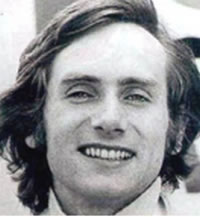
After a good showing at the 1974 Canadian Grand Prix, Koinigg was beginning to establish himself as a good prospect for 1975. But running near the back in the US Grand Prix at Watkins Glen, Koinigg's car suffered a suspension failure, pitching it head-on into the Armco barrier. The speed at which Koinigg crashed was relatively minor, and he ought to have escaped the scene uninjured. Unfortunately, as with a number of other circuits at that time, the Armco was insecurely installed and the bottom portion of it buckled as the vehicle struck it. The car passed underneath the top portion, which remained intact, decapitating Koinigg and killing him instantly.
8. Francois Cevert


In 1973, the Tyrrell team was back on top in Formula One and Cevert showed he was capable of running with Stewart at almost every race. He finished second six times, three times behind Stewart, who acknowledged that at times the Frenchman had been a very "obedient" teammate. As Cevert began to draw even with Stewart's driving abilities, the Scot was secretly planning to retire after the last race of the season in the United States. For the 1974 season, Cevert would be Tyrrell's team leader.
At Watkins Glen, with Stewart having already clinched his third World Championship, Cevert was killed during Saturday morning qualifying, while battling for pole position with Ronnie Peterson. In the fast left-right uphill combination called "The Esses" Cevert's car was a little too far over towards the left side of the track, getting a bump from the kerbs. This made it swerve towards the right-hand side of the track, where it touched the track's signature powder blue safety barriers causing it to spin and crash into the barriers on the other side of the track at a near 90° angle, uprooting and lifting the barrier. Cevert died instantly of massive injuries inflicted by the barrier, which cut his body in half between his neck and hip.
Cevert had crashed violently in the uphill Esses heading onto the back of the circuit. Fighting the car as he went up the hill, he brushed the curb on the left, whipped across the track and hit the guardrail on the right. The car began to spin, and he swerved back across the track at 150 mph and hit the outside guardrail almost head-on, Stewart said.
Jackie Stewart was one of the first on the scene of Cevert's accident and said later "They [the marshals] had left him [in the car], because he was so clearly dead." Stewart immediately left the scene of the accident and returned to the pits. Because of Cevert's death, Tyrell withdrew its entry for this GP, and Stewart did not run his final, and 100th race.
Cevert was 29 years and 224 days old. François Cevert is buried in the Cimetière de Vaudelnay in the village of Vaudelnay, Maine-et-Loire.
9. Roger Williamson
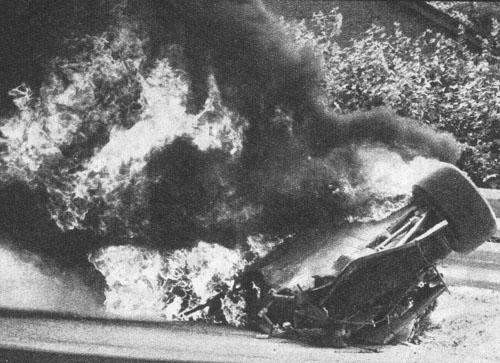

After his Formula One debut at the 1973 British Grand Prix, Williamson's second Formula One appearance was at the 1973 Dutch Grand Prix at Zandvoort Circuit. On his eighth lap, a suspected tyre failure caused his car to flip upside down and catch fire. Williamson had not been seriously injured by the impact, but was trapped under the car. The track marshals were both poorly trained and badly equipped, and could not assist him. Another driver, David Purley, upon witnessing the crash, abandoned his own race and pulled over in a desperate and valiant attempt to rescue Williamson. He ran across the track to Williamson's car and tried to turn it upright. When no-one came to help, he crossed the track and returned with a fire extinguisher. He emptied it on the car and signaled for others to help. Purley was unable to put out the fire or turn the car upright. By the time the first fire engine arrived and the fire was extinguished, Williamson had died ofasphyxiation. As most racers mistakenly identified Purley as the driver of the crashed car, none of them stopped to help and the race continued, even as Purley stood on the circuit and gestured with his hands to stop.
In 2003, on the thirtieth anniversary of his fatal crash, a bronze statue of Williamson was unveiled at the Donington Park circuit in his native Leicestershire. Then-owner Tom Wheatcroft had provided financial backing to Williamson, and described the day Williamson died as "the saddest day of my life".
10. Jochen Rindt
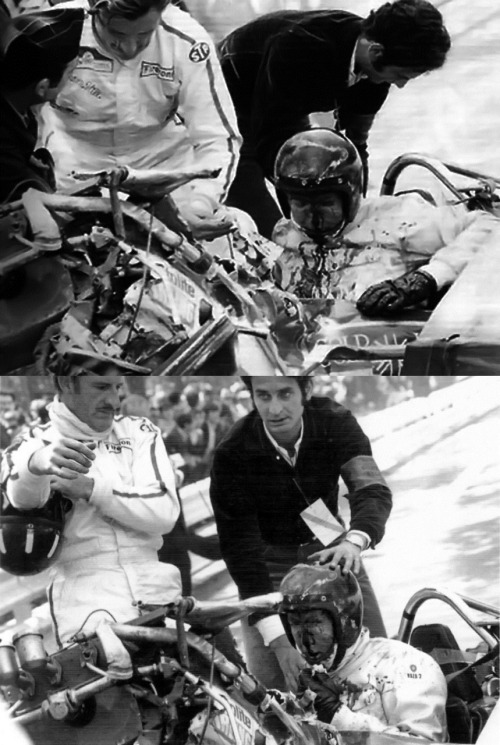
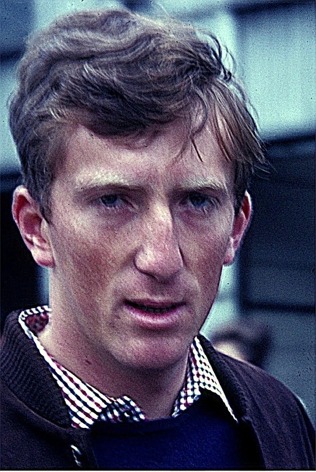
On the following day, Rindt ran with higher gear ratios fitted to his car to take advantage of the reduced drag, increasing the car's potential top speed to 205 mph (330 km/h). On Rindt's fifth lap of the final practice session, Hulme, who was following, reported that under braking for the Parabolica corner: "Jochen's car weaved slightly and then swerved sharp left into the crash barrier." A joint in the crash barrier parted, the suspension dug in under the barrier, and the car hit a stanchion head on. The front end of the car was destroyed. Although the 28 year old Rindt was rushed to hospital, he was pronounced dead. Rindt was in the habit of using only four points on the five point harness then available and not wearing the crotch straps, as he wanted to be able to get out of the car quickly in the event of fire. As a result upon impact he slid under the belts and suffered fatal chest and throat injuries. He was the second Lotus team leader to be killed in two years, as Jim Clark had been killed in 1968 in a Formula 2 race at Hockenheim. An Italian court later found that the accident was initiated by a failure of the car's right front brakeshaft, but that Rindt's death was caused by poorly installed crash barriers.
Rindt is buried at the central cemetery (Zentralfriedhof) in Graz.
At the time he died Rindt had won five of that year's ten Grands Prix, which meant that he had a strong lead in the World Championship. At that stage he theoretically could have been overtaken by Ferrari driver Jacky Ickx. However Rindt's Lotus team mate, Emerson Fittipaldi, won the penultimate Grand Prix of the year at Watkins Glen, USA, depriving Ickx of the points he needed to win the title, and so Rindt became motor racing's only posthumous World Champion. The trophy was presented to his Finnish widow Nina Rindt nee Lincoln, daughter of famous Finnish racer, Curt Lincoln. It was later learned that Jochen had already promised Nina he would retire from F1 if he won the world championship.
Tidak ada komentar:
Posting Komentar